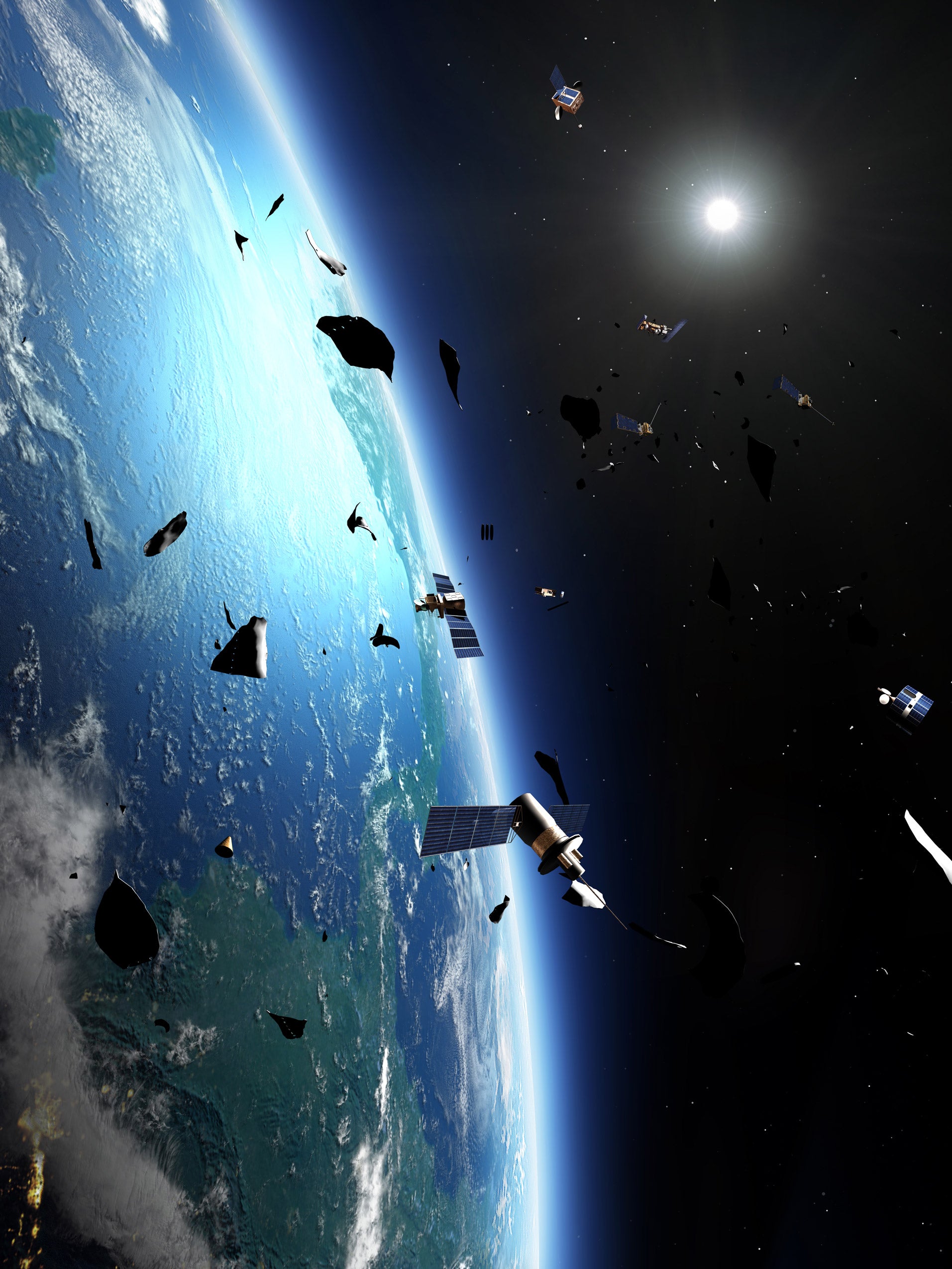Asha Jain ’26 started using power tools and saws at a young age. “In first grade, I knew how to drill,” she says. For Jain, it was just part of a deep-seated penchant for building things that was encouraged through her involvement with Odyssey of the Mind, a team-based problem-solving program. “I thought it was awesome that we could build a conga-line dancing robot that looked like an armadillo,” says Jain, who grew up outside Dallas. “That experience gave me a lot of confidence in the career path I chose.”
By the time she was in sixth grade, Jain knew that she wanted to be a space engineer. She majored in aerospace engineering at the University of Texas at Austin and spent a semester studying in France at CentraleSupélec. There, she got involved with a group of students building a satellite to be launched by CNES, the French space agency. “They had a space law problem,” Jain says. In the world of satellites, what goes up must come down; the students needed to understand the requirements around “deorbiting” the satellite when its work was done. “I started researching the European policies, all of which were requirements for licenses, not laws,” she recalls. The situation was complicated by the fact that the satellite was launching on a U.S. rocket — so U.S. regulations applied as well. From her research, Jain wrote a paper on the status of space debris regulation worldwide.

For Jain, an early encounter with the nascent field of space law drew her to Harvard Law, where as a 1L she’s served as events coordinator of the Space Law Society. (Karl Kensinger, special counsel of the Federal Communications Commission’s Space Bureau, was a recent speaker.) It’s a field brimming with possibilities for development and innovation, says Jain. The U.N.-sponsored Outer Space Treaty has provided the general framework for space law since 1967, stating, for example, that exploration of outer space should be in the interest of all countries and not subject to claims by individual governments. In 2020, however, an executive order by President Trump encouraged U.S. advancements in mining the moon and asteroids for precious metals. The move was criticized globally, but a few other countries followed suit, demonstrating the free-form, uncharted aspect of regulating an area that is still being explored and understood.
“Space has always been hotly connected to political fever and nationalism,” Jain says. “I believe the best path going forward is to develop some compliance, coordination, and development of norms that appeal to the global, common interest of operating in space.”
Key aspects in that regard are safety and sustainability, which brought Jain back to the question of satellites and what happens when they reenter Earth’s atmosphere — a topic she studied as a master’s student in aerospace engineering at MIT. “There are more than 40,000 objects in space right now,” she says. That number is expected to grow to about 100,000 over the next 10 years, which makes questions around regulating space debris and satellite reentry even more pressing.
Harvard asks what the law should be, says Jain, a question front and center for her when it comes to space.
The unpredictability of how and when a satellite will reenter Earth’s atmosphere is not yet a significant safety concern, but Jain points out how that will change over the next 10 to 15 years as the private sector establishes more and larger satellite constellations. “When you reach the level of 100,000 satellites, that will result in an estimated 54 ‘deaths’ per day,” she says. “So now you have two unpredictable fireballs coming to Earth every hour. Eighty percent disintegrate into particles with no impact concerns, but some parts do survive, and we don’t have a good grasp on when they survive and why.”
It’s a more costly proposition, but with additional fuel and monitoring, satellite reentry can be controlled, as is current practice with rockets. For that reason, it’s an area ripe for legislation, and one where Jain can see a career path through a role at the FCC or the Department of Commerce (the two governmental bodies with the most engagement in this area to date) and then potentially as a U.S. negotiator at the United Nations or International Telecommunication Union (the international version of the FCC). “You’re going to have to pull on different threads to establish international norms,” she says. “I believe the primary impetus will come from the understanding that sustainability is not just good for the environment — we will actually lose our ability to continue operating in space and deriving value from it if we ignore these issues.”

Jain spent last summer working as an engineer at SpaceX and will return there this year to the company’s policy side, working with the FCC in its examination of SpaceX’s satellite sustainability operations. She could see herself joining a smaller venture after earning her law degree. “When it comes to startups, space has immense power to help meet the U.N.’s 2050 climate goals,” she says. “The majority of our weather data comes from space; there are still opportunities to translate that information into tangible actions to benefit people on the ground.”
This year, however, she’s been fully focused on the 1L experience. “The caliber of minds I’ve been exposed to has pushed me to think beyond my position,” she says. “The other thing I love,” she says, is that Harvard asks “what the law should be, not what the law is — and that is a question I’m asking all the time in space, where there are still so few laws.”
